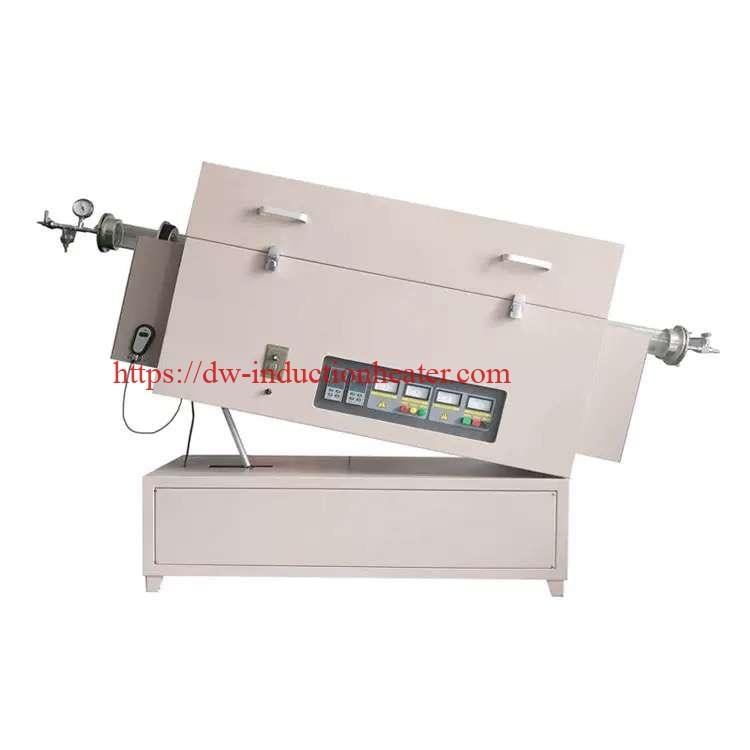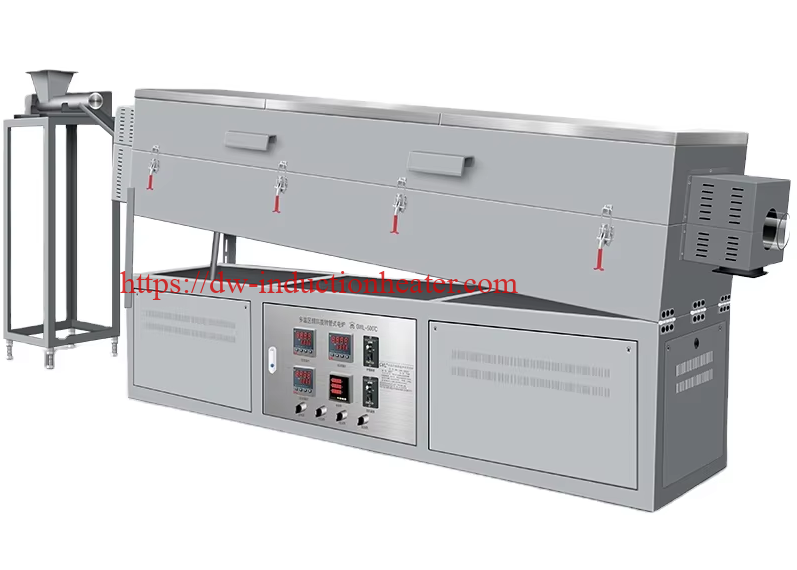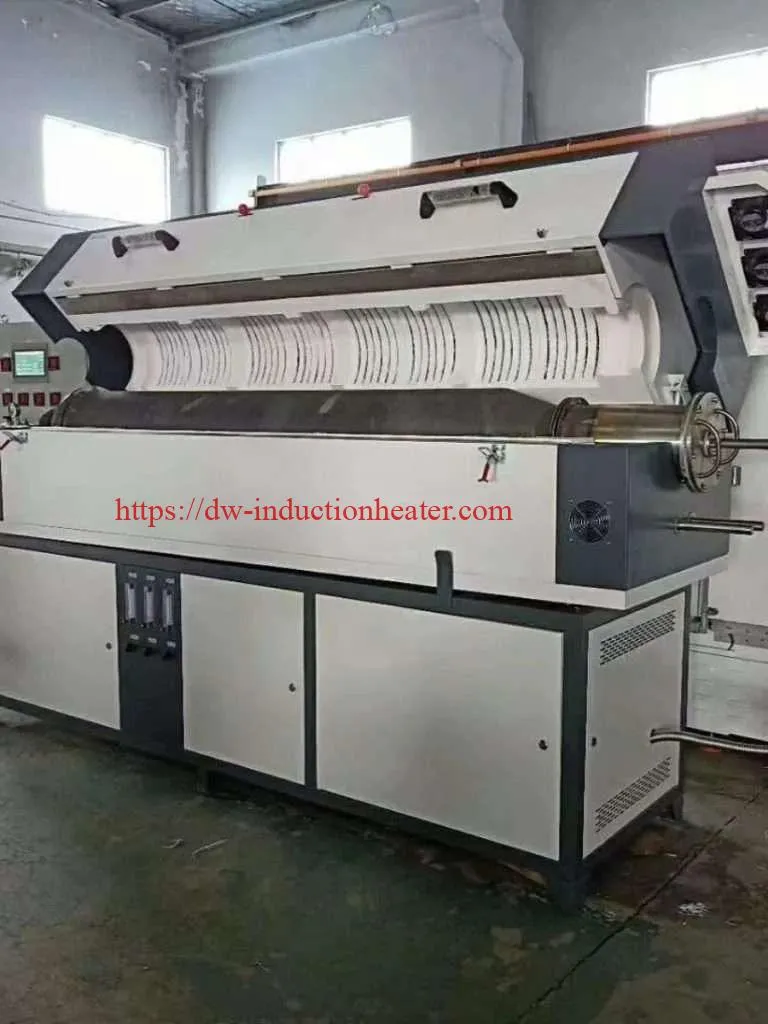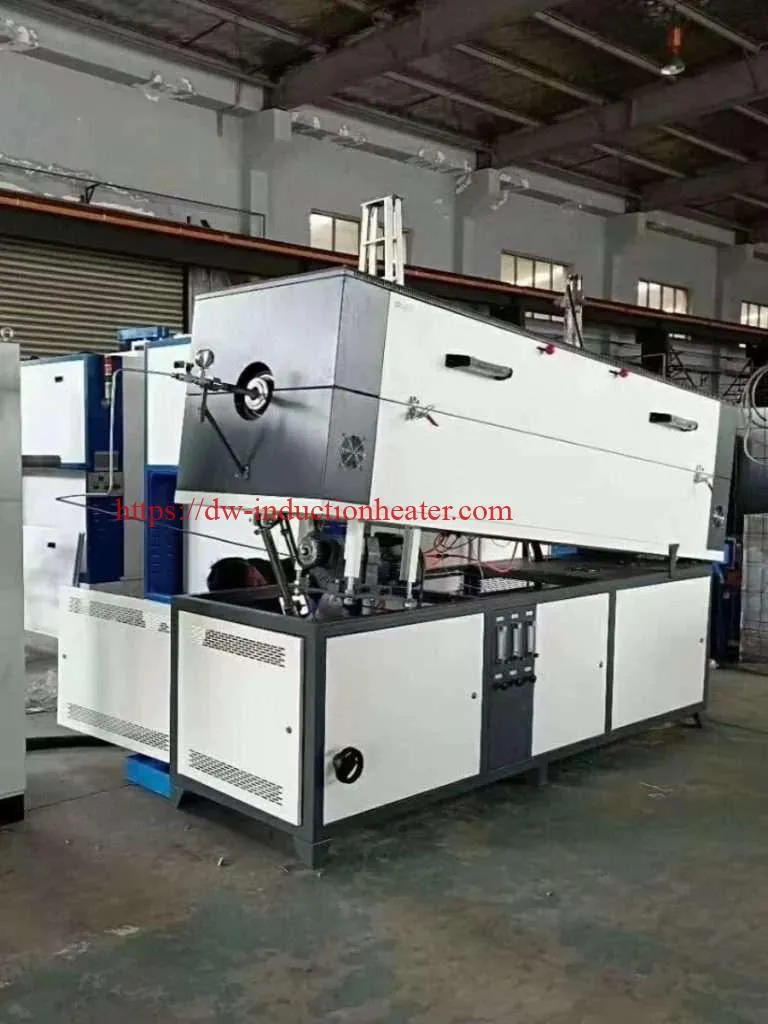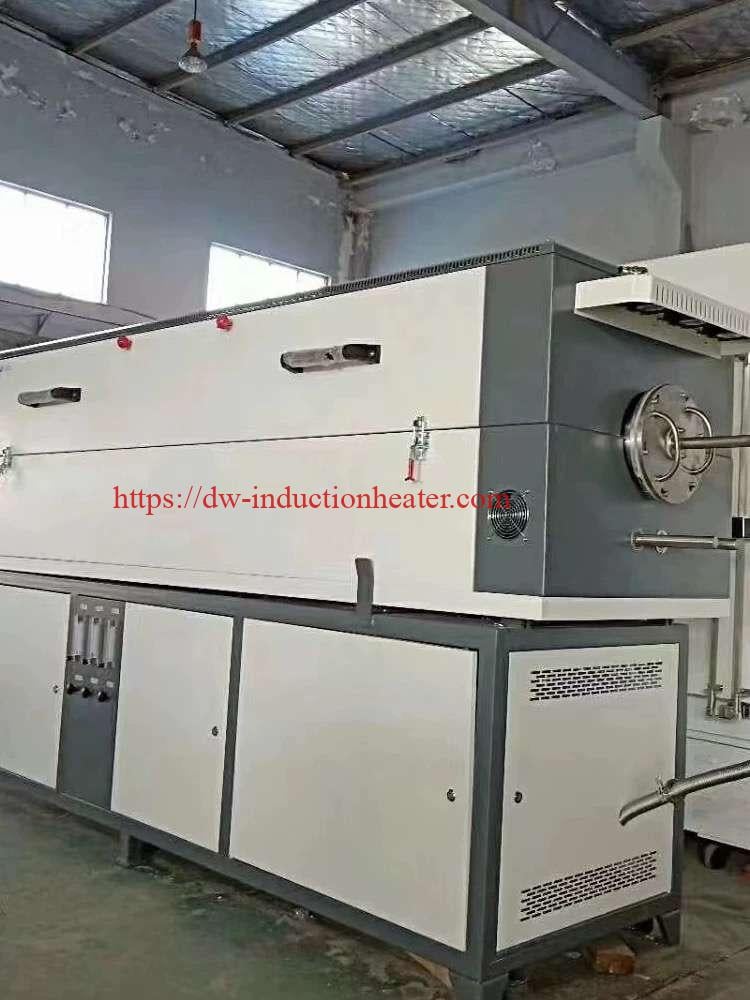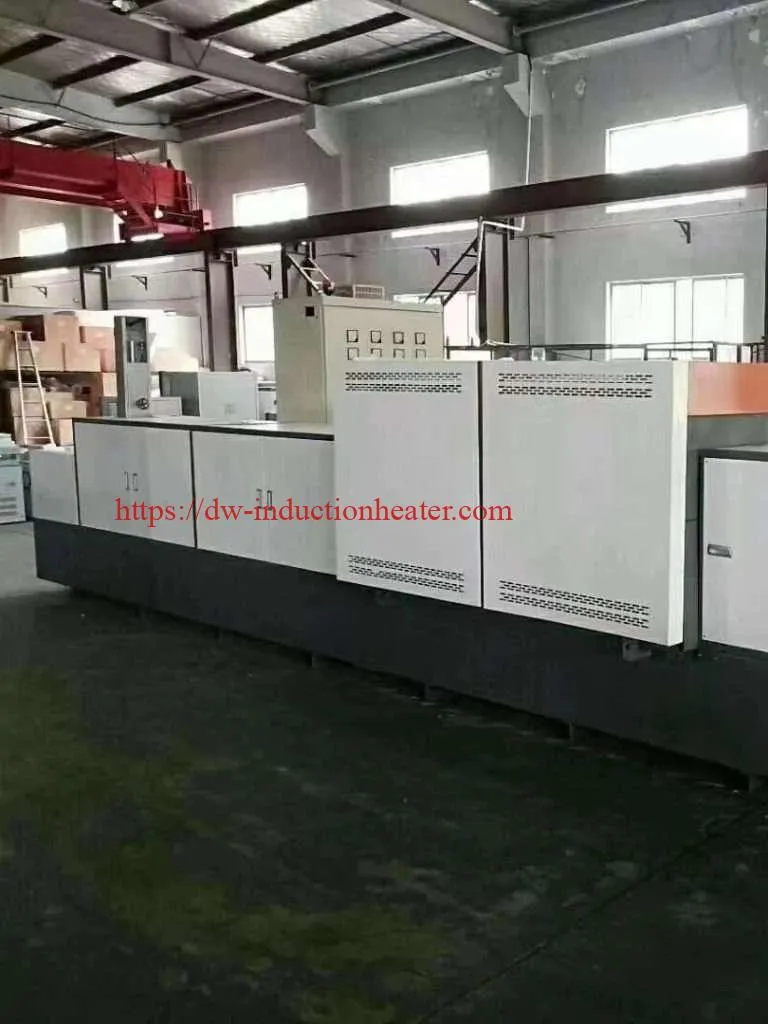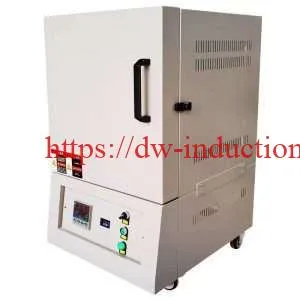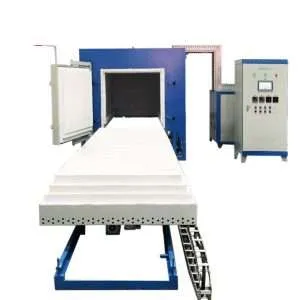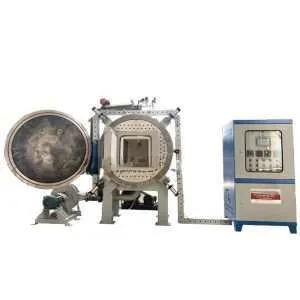-
1/6
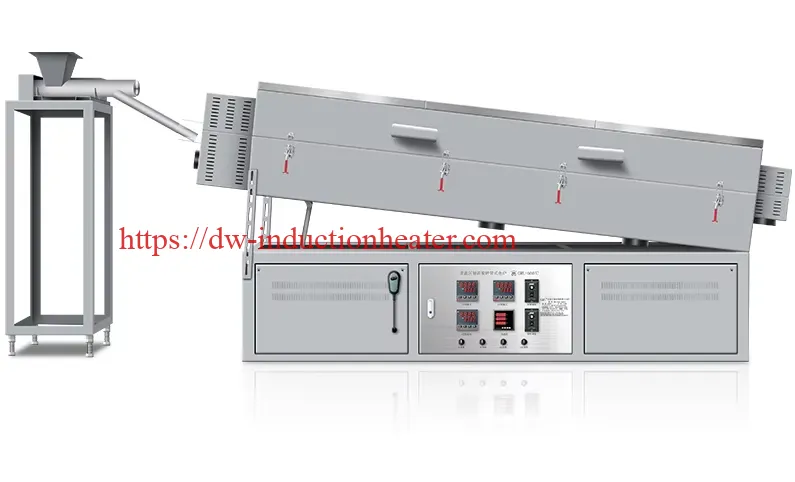
-
2/6

-
3/6

-
4/6

-
5/6

High-Temperature Multi-Zone Rotary Incline Tube Furnace Kiln
High-Temperature Multi-Zone Rotary Incline Tube Furnace
Modern advanced materials processing demands precision, flexibility, and reliability. The High-Temperature Multi-Zone Rotary Incline Tube Furnace has emerged as a cornerstone technology for continuous thermal processing, material synthesis, and pilot-scale experiments. Combining multiple heating zones, inclined tube geometry, and programmable rotation, these furnaces offer unmatched temperature uniformity, mixing, and process automation for research, industrial, and pilot plant applications.
The High-Temperature Multi-Zone Rotary Incline Tube Furnace is a transformative solution for industries and research facilities tackling complex high-temperature processes. With its cutting-edge multi-zone heating technology, rotary incline design, and exceptional performance metrics, this furnace delivers unmatched precision, efficiency, and reliability. Whether you’re in ceramics manufacturing, advanced materials research, or metallurgical processing, this system is engineered to elevate your operations to the next level.
What Is a High-Temperature Multi-Zone Rotary Incline Tube Furnace?
A rotary incline tube furnace is a specialized laboratory or industrial furnace featuring:
- Multiple independent heating zones for precise temperature control along the process path,
- Inclined tube geometry to facilitate gravity-driven movement of samples,
- Rotary action that continuously mixes materials, improving heat transfer and reaction uniformity,
- Programmable controls for atmosphere, rotation speed, and temperature ramping.

These features make the furnace highly suitable for thermal treatment, calcination, pyrolysis, reduction, sintering, and other applications, especially in powder metallurgy, ceramics, and advanced materials research.
Working Principle and Design Features
The High-Temperature Multi-Zone Rotary Incline Tube Furnace operates on a straightforward yet sophisticated principle. Material is fed into a rotating tube set at a calculated angle of inclination. As the tube rotates, gravity and rotation cause materials to move progressively through multiple heating zones, each independently controlled to create precise temperature profiles.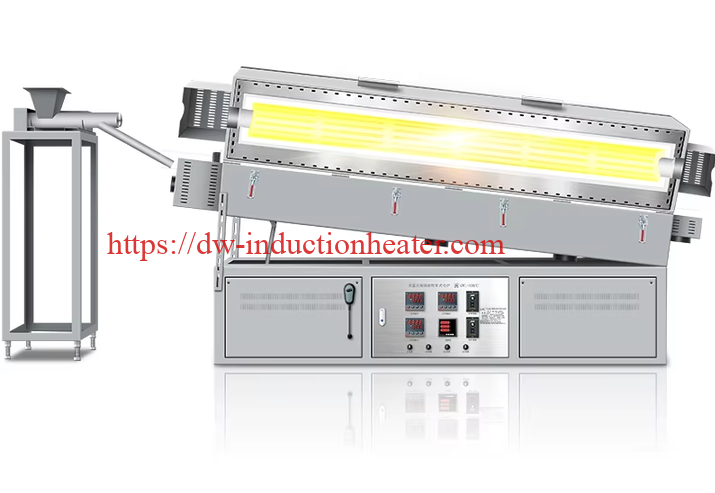
Key design features include:
- Multi-Zone Heating System: Separate heating elements create distinct temperature zones along the tube length, allowing for precise thermal profiles.
- Rotation Mechanism: A variable-speed drive system rotates the tube at precisely controlled rates.
- Inclination Control: Adjustable tube angle affects material flow rate and residence time.
- Atmosphere Control: Specialized gas inlets and seals maintain specific processing atmospheres.
- Material Handling System: Automated feed and collection systems ensure consistent processing.
Technical Parameters and Specifications
The following tables present comprehensive technical specifications for standard High-Temperature Multi-Zone Rotary Incline Tube Furnace models:
Table 1: Temperature Specifications
| Parameter | Standard Model | High-Performance Model | Ultra-High Temp Model |
|---|---|---|---|
| Maximum Temperature | 1200°C | 1600°C | 1800°C |
| Temperature Stability | ±1°C | ±1°C | ±1°C |
| Heating Rate | 5-20°C/min | 5-30°C/min | 5-40°C/min |
| Number of Control Zones | 3-5 | 5-7 | 7-9 |
| Zone Independence | ±50°C | ±100°C | ±150°C |
| Temperature Uniformity | ±3°C | ±5°C | ±5°C |
Table 2: Mechanical and Operational Parameters
| Parameter | Small Scale | Medium Scale | Industrial Scale |
|---|---|---|---|
| Tube Diameter | 50-100mm | 100-200mm | 200-500mm |
| Tube Length | 1000-1500mm | 1500-3000mm | 3000-6000mm |
| Tube Material | Quartz/Alumina | Alumina/Mullite | Mullite/Silicon Carbide |
| Rotation Speed Range | 1-20 rpm | 1-15 rpm | 0.5-10 rpm |
| Inclination Angle | 1-5° | 1-7° | 1-10° |
| Maximum Load | 5-10 kg/h | 10-50 kg/h | 50-500 kg/h |
| Processing Capacity | 15-30 L/h | 30-150 L/h | 150-1500 L/h |
Table 3: Control System Parameters
| Parameter | Basic System | Advanced System | Premium System |
|---|---|---|---|
| Temperature Control | PID | PID with Cascade | Adaptive PID |
| Control Precision | ±2°C | ±1°C | ±0.5°C |
| Programming Steps | 30 | 100 | Unlimited |
| Data Logging | Basic | Extended | Comprehensive |
| Interface | LCD Display | Touchscreen | Industrial PC |
| Remote Monitoring | Optional | Standard | Advanced |
| Power Rating | 15-30 kW | 30-60 kW | 60-120 kW |
Data Analysis
Temperature Profile Analysis
The multi-zone design allows for sophisticated temperature profiles that can be tailored to specific material processing requirements. The graph below illustrates typical temperature gradient capabilities:
Temperature Profile Analysis:
- Heating zones can maintain distinct temperature plateaus
- Transition zones create controlled temperature ramps
- Maximum temperature differential between adjacent zones: up to 400°C
- Temperature ramp rates are independently programmable
- Cooling zones can be integrated for controlled cooldown

Material Residence Time Analysis
One of the critical parameters in rotary tube furnace operation is material residence time, which is influenced by multiple factors:
Residence Time Factors:
- Tube inclination angle (higher angle = shorter residence time)
- Rotation speed (higher speed = shorter residence time)
- Material characteristics (particle size, cohesion)
- Internal baffles or flights (increases residence time)
For a standard 3-meter furnace at 3° inclination:
- Fine powders (0.1-0.5mm): 45-60 minutes residence time
- Granular materials (0.5-2mm): 30-45 minutes residence time
- Coarse materials (2-5mm): 15-30 minutes residence time
Energy Efficiency Analysis
Modern High-Temperature Multi-Zone Rotary Incline Tube Furnaces incorporate numerous energy-saving features:
- High-efficiency insulation materials reduce heat loss by 25-40%
- Zone-specific heating reduces energy consumption by 15-30%
- Heat recuperation systems capture and reuse 20-35% of exhaust heat
- Advanced PID controllers optimize power delivery, reducing consumption by 10-15%
- Scheduled operation modes minimize idle running time
Real-World Case Studies
Case Study 1: Ceramic Powder Processing in Electronics Manufacturing
A leading electronic components manufacturer implemented a 5-zone rotary tube furnace for processing specialty ceramic powders used in multilayer ceramic capacitors.
Challenge: The process required precise calcination with controlled phase transformation across multiple temperature stages.
Solution: A 1600°C, 5-zone furnace with the following configuration:
- Zone 1: 600°C (moisture removal)
- Zone 2: 900°C (organic burnout)
- Zone 3: 1300°C (calcination)
- Zone 4: 1500°C (crystallization)
- Zone 5: 1000°C (controlled cooling)
Results:
- 99.8% phase purity achieved
- Processing capacity increased by 35%
- Energy consumption reduced by 22%
- Particle size distribution narrowed from ±1.2μm to ±0.3μm
- Production yield improved from 92% to 98.5%
Case Study 2: Advanced Materials Research Laboratory
A materials science research institute utilized a high-precision multi-zone furnace for developing novel refractory materials.
Setup:
- 1800°C maximum temperature
- 7 independently controlled heating zones
- Controlled atmosphere capability (nitrogen, argon, forming gas)
- Precision rotation control (0.1 rpm increments)

Application: Development of gradient-structured ceramic composites with tailored thermal expansion properties.
Outcomes:
- Successfully created materials with thermal expansion gradients of 0.5×10⁻⁶/°C to 9×10⁻⁶/°C
- Reduced development cycle from 8 months to 6 weeks
- Enabled precise replication of experimental conditions
- Thermal shock resistance improved by 300% compared to conventional materials
Case Study 3: Industrial Scale Catalyst Production
A chemical catalyst manufacturer implemented a large-scale multi-zone rotary furnace for continuous production of platinum-based catalysts.
System Specifications:
- 3-meter tube length, 300mm diameter
- 4 temperature zones (400°C, 600°C, 800°C, 550°C)
- Processing capacity: 75 kg/hour
- Hydrogen-nitrogen atmosphere control
- Real-time particle analysis system

Process Improvement:
- Catalyst activity increased by 28%
- Surface area consistency improved by 42%
- Production capacity increased from 400 kg/day to 1,800 kg/day
- Reduced precious metal consumption by 15%
- Energy efficiency improved by 34% compared to batch processing
Why Choose a Multi-Zone Rotary Incline Tube Furnace?
High-Temperature Multi-Zone Rotary Incline Tube Furnaces represent the pinnacle of modern thermal processing for advanced materials. Offering:
- Unmatched temperature control and process flexibility,
- Enhanced mixing and uniformity for superior product quality,
- Programmable automation for research, pilot plants, and full-scale industries.

Conclusion
The High-Temperature Multi-Zone Rotary Incline Tube Furnace represents a versatile and powerful thermal processing solution for a wide range of advanced materials applications. With precise temperature gradient control, adjustable residence time, and atmosphere management capabilities, these systems deliver exceptional performance for both research and industrial production environments.
As materials science continues to advance, these sophisticated thermal processing systems will remain at the forefront of enabling new materials development and efficient production processes. The combination of multi-zone heating, precise rotation control, and inclination adjustment provides unmatched flexibility for optimizing thermal treatments across diverse material systems.
Whether for ceramics, catalysts, battery materials, or advanced composites, the High-Temperature Multi-Zone Rotary Incline Tube Furnace continues to evolve as an essential tool for modern materials processing challenges.
Industrial Electric Tube Furnace